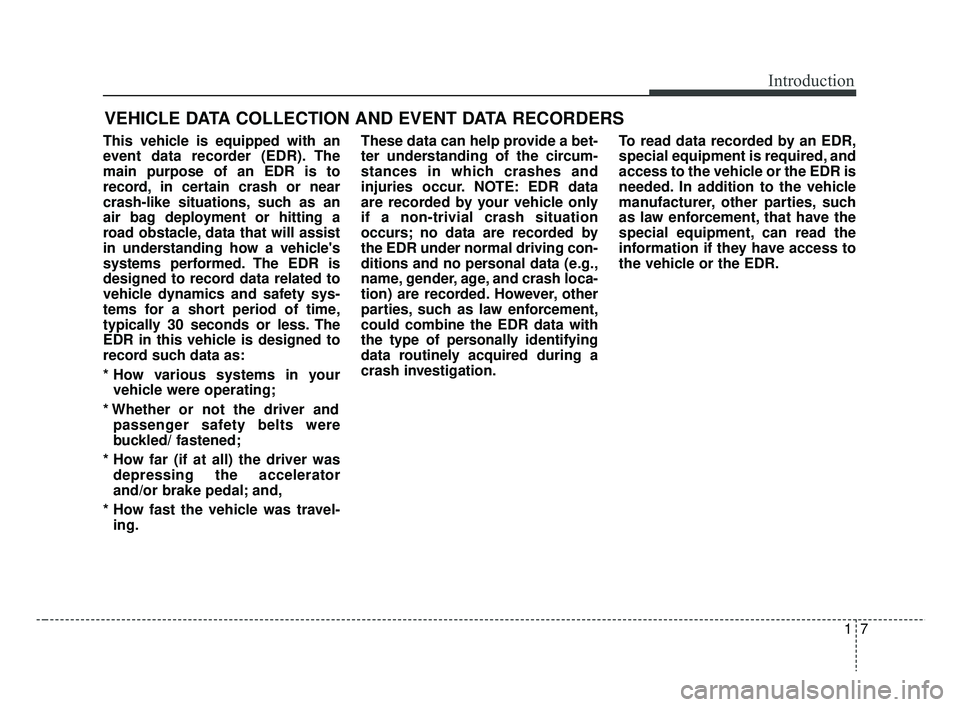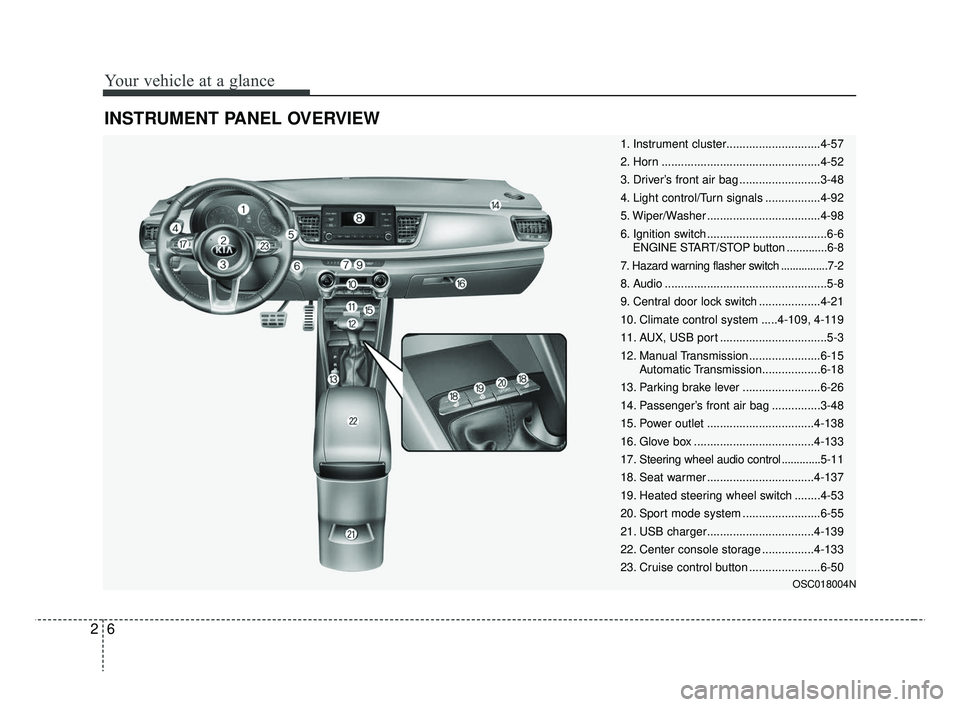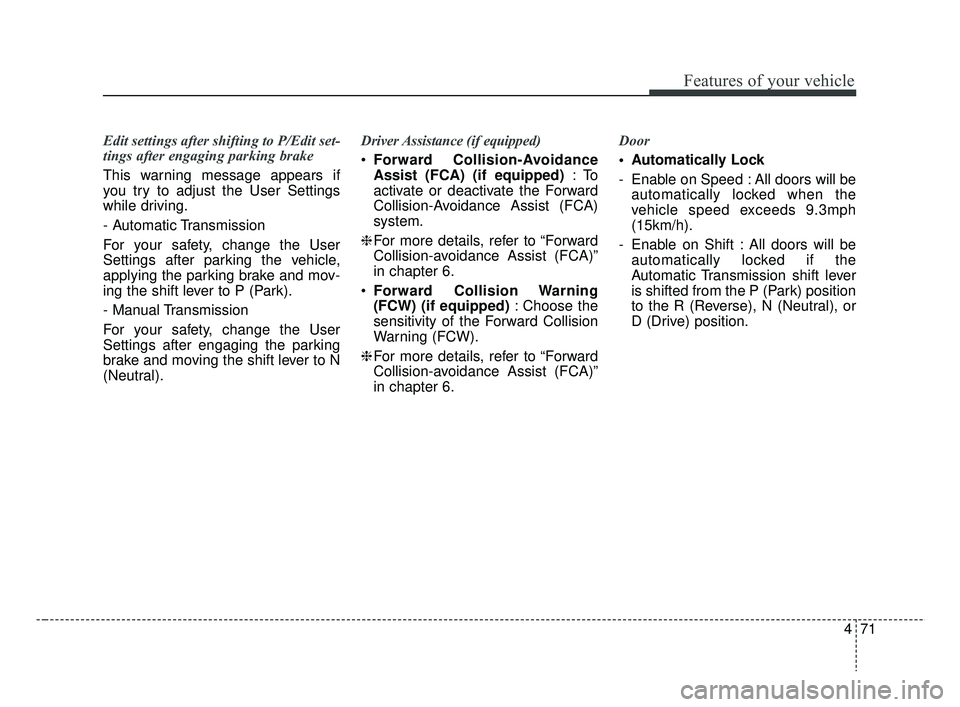Page 9 of 503
Introduction
61
No special break-in period is need-
ed. By following a few simple precau-
tions for the first 1,000 km (600
miles) you may add to the perform-
ance, economy and life of your vehi-
cle.
Do not race the engine.
While driving, keep your enginespeed (rpm, or revolutions per
minute) between 2,000 rpm and
4,000 rpm.
Do not maintain a single speed for long periods of time, either fast or
slow. Varying engine speed is
needed to properly break-in the
engine.
Avoid hard stops, except in emer- gencies, to allow the brakes to seat
properly.
Don't tow a trailer during the first 2,000 km (1,200 miles) of opera-
tion.
VEHICLE BREAK-IN
PROCESS
SC CAN (ENG) 1.QXP 7/18/2018 5:30 PM Page 6
Page 10 of 503

17
Introduction
VEHICLE DATA COLLECTION AND EVENT DATA RECORDERS
This vehicle is equipped with an
event data recorder (EDR). The
main purpose of an EDR is to
record, in certain crash or near
crash-like situations, such as an
air bag deployment or hitting a
road obstacle, data that will assist
in understanding how a vehicle's
systems performed. The EDR is
designed to record data related to
vehicle dynamics and safety sys-
tems for a short period of time,
typically 30 seconds or less. The
EDR in this vehicle is designed to
record such data as:
* How various systems in yourvehicle were operating;
* Whether or not the driver and passenger safety belts were
buckled/ fastened;
* How far (if at all) the driver was depressing the accelerator
and/or brake pedal; and,
* How fast the vehicle was travel- ing. These data can help provide a bet-
ter understanding of the circum-
stances in which crashes and
injuries occur. NOTE: EDR data
are recorded by your vehicle only
if a non-trivial crash situation
occurs; no data are recorded by
the EDR under normal driving con-
ditions and no personal data (e.g.,
name, gender, age, and crash loca-
tion) are recorded. However, other
parties, such as law enforcement,
could combine the EDR data with
the type of personally identifying
data routinely acquired during a
crash investigation.
To read data recorded by an EDR,
special equipment is required, and
access to the vehicle or the EDR is
needed. In addition to the vehicle
manufacturer, other parties, such
as law enforcement, that have the
special equipment, can read the
information if they have access to
the vehicle or the EDR.
SC CAN (ENG) 1.QXP 7/18/2018 5:30 PM Page 7
Page 15 of 503

25
Your vehicle at a glance
INTERIOR OVERVIEW
1. Inside door handle ............................4-20
2. Inner fuse panel ................................8-57
3. Power window switches ....................4-34
4. Power window lock button ................4-37
5. Outside rearview mirror control switch ................................................4-55
6. Outside rearview mirror folding switch ................................................4-56
7. Hood release lever ............................4-39
8. Fuel filler lid release lever .................4-42
9. Trunk open lever ...............................4-24
10. Steering wheel ................................4-51
11. Steering wheel tilt control ...............4-52
12. Instrument panel illumination control switch ..............................................4-57
13. ESC OFF button .............................6-30
14. Brake pedal .....................................6-24
15. Accelerator pedal
OSC017003N
• 4 Door
SC CAN (ENG) 2.qxp 7/18/2018 5:30 PM Page 5
Page 16 of 503

Your vehicle at a glance
62
INSTRUMENT PANEL OVERVIEW
OSC018004N
1. Instrument cluster.............................4-57
2. Horn .................................................4-52
3. Driver’s front air bag .........................3-48
4. Light control/Turn signals .................4-92
5. Wiper/Washer ...................................4-98
6. Ignition switch .....................................6-6ENGINE START/STOP button .............6-8
7. Hazard warning flasher switch ................7-2
8. Audio ..................................................5-8
9. Central door lock switch ...................4-21
10. Climate control system .....4-109, 4-119
11. AUX, USB port .................................5-3
12. Manual Transmission ......................6-15 Automatic Transmission..................6-18
13. Parking brake lever ........................6-26
14. Passenger’s front air bag ...............3-48
15. Power outlet .................................4-138
16. Glove box .....................................4-133
17. Steering wheel audio control ............. 5-11
18. Seat warmer .................................4-137
19. Heated steering wheel switch ........4-53
20. Sport mode system ........................6-55
21. USB charger.................................4-139
22. Center console storage ................4-133
23. Cruise control button ......................6-50
SC CAN (ENG) 2.qxp 7/18/2018 5:30 PM Page 6
Page 17 of 503
27
Your vehicle at a glance
ENGINE COMPARTMENT
OSC077013N
■ ■Gamma 1.6L GDI Engine (Gasoline)❈ The actual engine compartment in the vehicle may differ from the illustration. 1. Engine coolant reservoir ...................8-24
2. Engine oil filler cap ...........................8-21
3. Brake / clutch fluid reservoir .............8-26
4. Air cleaner.........................................8-29
5. Fuse box ...........................................8-59
6. Negative battery terminal..................8-37
7. Positive battery terminal ...................8-37
8. Engine oil dipstick .............................8-21
9. Radiator cap .....................................8-23
10.Windshield washer fluid reservoir ....8-27
SC CAN (ENG) 2.qxp 7/18/2018 5:30 PM Page 7
Page 76 of 503
359
Safety features of your vehicle
In a slant or angled collision, theforce of impact may direct the
occupants in a direction where the
air bags would not be able to pro-
vide any additional benefit, and
thus the sensors may not deploy
any air bags. Just before impact, drivers often
brake heavily. Such heavy braking
lowers the front portion of the vehi-
cle causing it to “ride” under a vehi-
cle with a higher ground clearance.
Air bags may not inflate in this
“under-ride” situation because
deceleration forces that are detect-
ed by sensors may be significantly
replaced by such “under-ride” colli-
sions. Front air bags may not inflate in
rollover accidents because front air
bag deployment would not provide
additional occupant protection.
However, side and curtain air bags
may inflate when the vehicle is
rolled over.
1JBA35221JBA35211JBA3517
SC CAN (ENG) 3.QXP 7/18/2018 5:57 PM Page 59
Page 117 of 503
439
Features of your vehicle
Opening the hood
1. Pull the release lever to unlatchthe hood. The hood should pop
open slightly.
Open the hood after turning off the
engine on a flat surface, shifting the
shift lever to the P (Park) position for
Automatic Transmission and to the
1st (First) gear or R (Reverse) for
Manual Transmission, and setting
the parking brake. 2. Go to the front of the vehicle, raise
the hood slightly, push the second-
ary latch (1) inside of the hood
center and lift the hood (2). 3. Pull the support rod from the
hood.
4. Hold the hood open with the sup- port rod.
HOOD
OYB046022
OSC047447NOYB046024
WARNING - Hot parts
Grasp the support rod in the
area wrapped in rubber. The
rubber will help prevent you
from being burned by hot metal
when the engine is hot.
SC CAN (ENG) 4.QXP 7/18/2018 5:47 PM Page 39
Page 149 of 503

471
Features of your vehicle
Edit settings after shifting to P/Edit set-
tings after engaging parking brake
This warning message appears if
you try to adjust the User Settings
while driving.
- Automatic Transmission
For your safety, change the User
Settings after parking the vehicle,
applying the parking brake and mov-
ing the shift lever to P (Park).
- Manual Transmission
For your safety, change the User
Settings after engaging the parking
brake and moving the shift lever to N
(Neutral).Driver Assistance (if equipped)
Forward Collision-Avoidance
Assist (FCA) (if equipped) :To
activate or deactivate the Forward
Collision-Avoidance Assist (FCA)
system.
❈ For more details, refer to “Forward
Collision-avoidance Assist (FCA)”
in chapter 6.
Forward Collision Warning
(FCW) (if equipped) : Choose the
sensitivity of the Forward Collision
Warning (FCW).
❈ For more details, refer to “Forward
Collision-avoidance Assist (FCA)”
in chapter 6. Door
Automatically Lock
- Enable on Speed : All doors will be
automatically locked when the
vehicle speed exceeds 9.3mph
(15km/h).
- Enable on Shift : All doors will be automatically locked if the
Automatic Transmission shift lever
is shifted from the P (Park) position
to the R (Reverse), N (Neutral), or
D (Drive) position.
SC CAN (ENG) 4.QXP 7/18/2018 5:49 PM Page 71